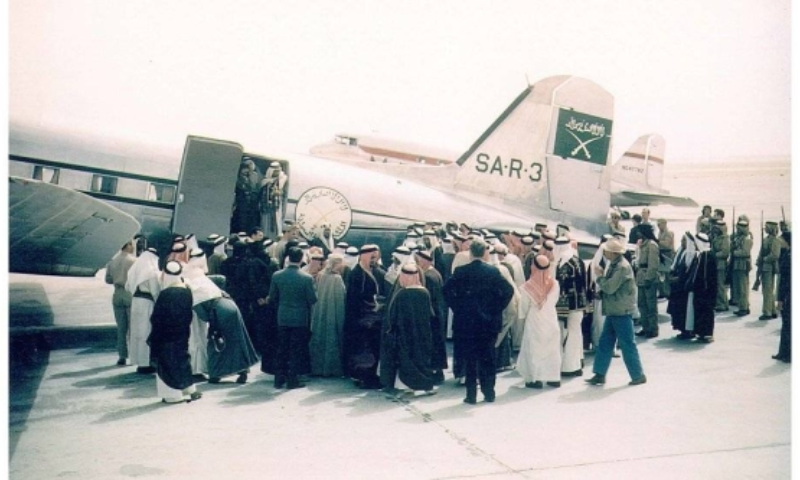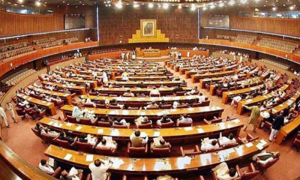RIYADH: After dismounting from his horse, “Abiya,” to announce the unification of the Kingdom of Saudi Arabia and outline its geographic boundaries to the world, King Abdulaziz bin Abdulrahman Al-Saud took to the skies aboard the “Dakota DC-3,” with a great mission of connecting the Kingdom with the international community and establishing its political map, Saudi Gazette reported.
The story of the Dakota started when US President Franklin D. Roosevelt decided to present a gift to King Abdulaziz. The US President consulted with his advisors regarding suitable gift options for a “Saudi King.” One advisor, Dr. Snyder, recommended that a plane would be the most fitting gift, the newspaper reported.
On February 14, 1945, the Dakota, gifted by the then US President, landed on the runway that is now home to the Kingdom’s Ministry of Foreign Affairs in Jeddah. Prince Mansour bin Abdulaziz had received the aircraft from its American pilot, delivering a speech on behalf of King Abdulaziz and conveying gratitude to the government of the US.
Civil Aviation in Saudi Arabia
The Dakota marked the start of civil aviation in Saudi Arabia. On September 30, 1945, King Abdulaziz embarked on his first flight aboard the Dakota, flying from Al-Afeef near Riyadh to Al-Hawiyah in Taif. The flight was piloted by US Captain Joe Grand, assisted by Saudi co-pilot Hamza Tarabzoni. One of the notable features of the Dakota was its capability to land on unpaved, flat areas, which allowed it to reach various areas of the Kingdom of Saudi Arabia (KSA) easily.
This ability enabled the aviation sector to link the different administrative regions of the Kingdom of Saudi Arabia (KSA). During this journey, King Abdulaziz had realized the efficiency of air travel for connecting the Kingdom. Upon landing from Al-Afeef to Al-Hawiyah route, impressed by the speed and ease of flying, King Abdulaziz decided to purchase two more planes. This marked the start of civil aviation, fulfilling King Abdulaziz’s vision of extending flying experience within the Kingdom.
The Dakota DC-3 was made by Douglas Aircraft in 1935. It is a twin-engine, low-wing monoplane able of accommodating around 28 passengers, with a maximum payload of 6,000 pounds. The plane is approximately 20 meters long, with a wingspan of 30 meters, and can reach speeds of up to 370 km per hour.
READ ALSO: Israel Kills Top Hezbollah Leader in Beirut Strike
The early pioneers laid a firm foundation that later aligned with the Chicago Convention, which set global standards for airports. Sarhan’s efforts were vital, as each site he selected complied with the criteria set up later by international organizations.
The first global flight took off under King Abdulaziz’s orders to transport Palestinian pilgrims to the holy sites. King Abdulaziz had established the foundation of air navigation in the Kingdom of Saudi Arabia, viewing it as a key means to achieve his objectives. King Saud significantly advanced this sector during his period, and the kings, who succeeded including King Faisal, continued to build upon this legacy. Since the early days of the modern Saudi state, the aviation field has benefited from generous support and a forward-thinking vision of connecting the Kingdom of Saudi Arabia (KSA) to the world.
This resolve is evident in the fact that the Kingdom of Saudi Arabia (KSA) has operated aircraft types not owned by many larger countries. It was the first operator of Boeing 707s, 747 jumbo jets, and L1011 TriStars in the Middle East. The aim of acquiring these aircraft extended beyond connecting the Kingdom of Saudi Arabia’s (KSA) regions to establishing international links.























